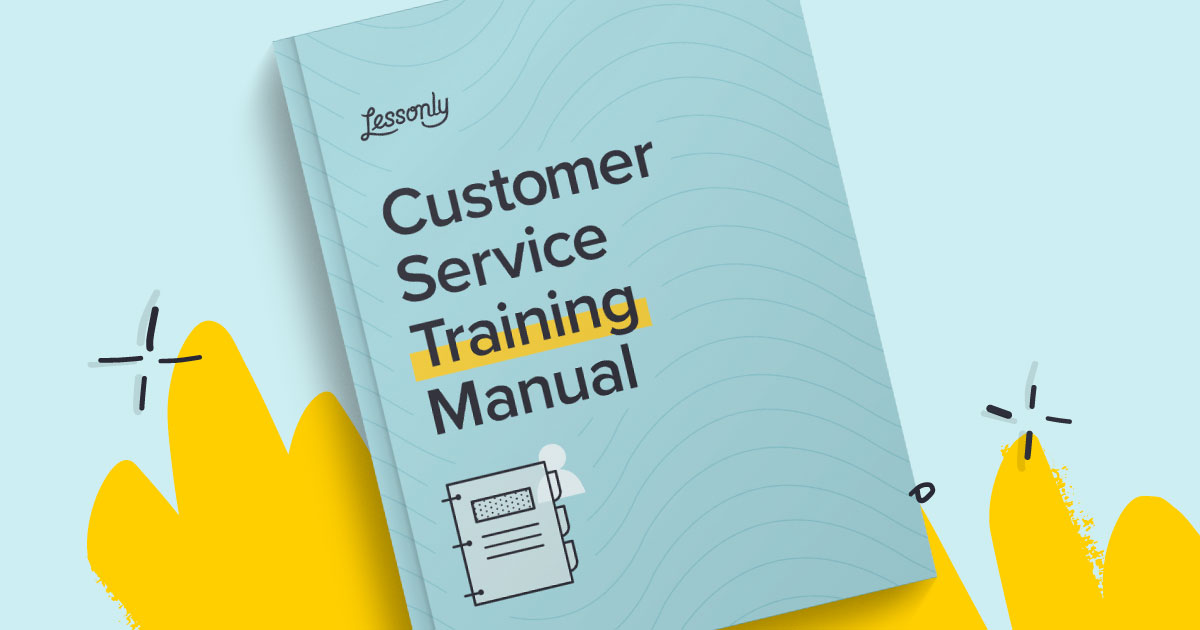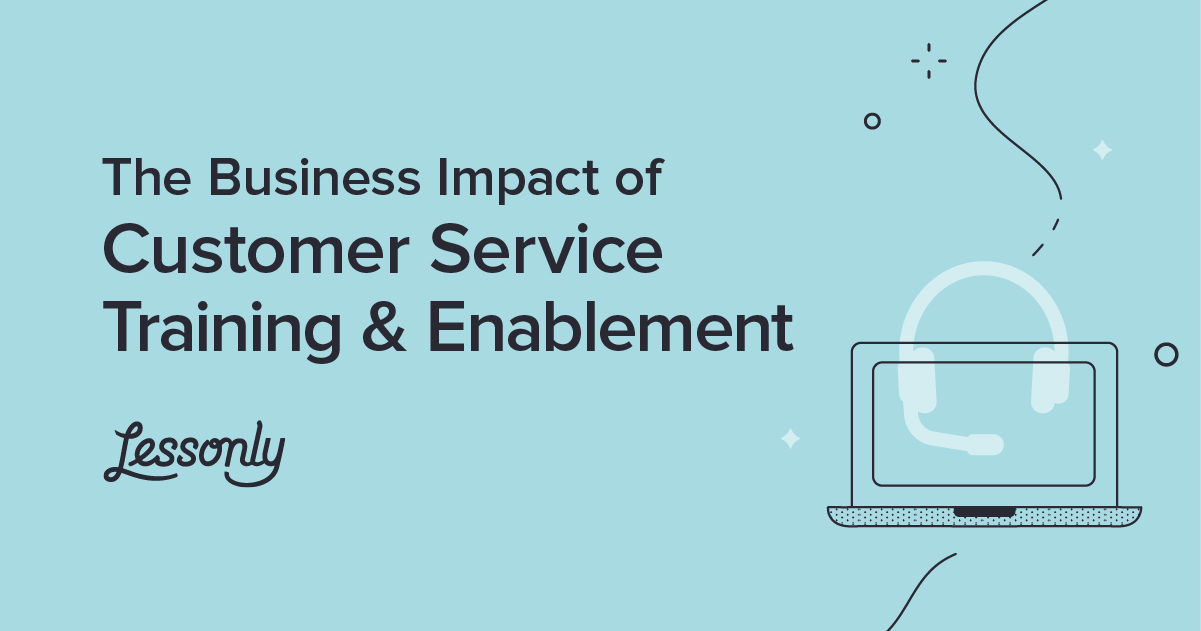Delight Customers with your Customer Service Policy
Build guidelines and train agents to deliver superior service with our customer service policy examples.
Get the Resource
Most businesses understand that customer service can make or break their success. To have good customer service, companies need a great customer service policy. The best strategy to allow agents to flourish in customer service is by empowering them. However, it’s difficult to keep consistent customer service across the business, which is why customer service guidelines are so important.
For example, agents need to know how far they can go to solve a customer’s problem and keep them coming back. In the resource above, you’ll find a customer service policy example for how to train your employees in a way that gives them autonomy to delight customers and how to build guidelines around the needs of your business.
Using a customer service policy template is a great way to start building your own customer service policy. Basing your guidelines on a customer service policy sample also gives you insight into what other companies are doing with their customer service. You might even see some things you may not have thought about.
After you’ve established your customer service policy definition, share it with the team and get feedback. It will likely be a work in progress for a while. That’s OK—your agents will have great feedback for what they need to be able to do or say to customers. You can then adapt the feedback to update your customer service policy and procedures template.
Why are customer service policies and procedures important?
As we’ve briefly alluded to, a customer service policy is an important building block to customer service success. Every organization needs a standard set of customer service guidelines. It enables your customer service team to function better and reduce the chances of missteps. When everyone understands what to do, or at least how to find out what to do, your employees will make better decisions and operate more effectively. There are several advantages to having organizational policies and procedures that your employees can refer to:
Confidence
When your employees know what you want them to do, they will execute it with more confidence than a worker who is only guessing the next best move. Sharing best practices with your workforce empowers employees to act with assurance instead of scrambling to find answers. When customers interact with your reps, they don’t want to wait for “manager approval” for each step to proceed.
Consistency
The customer experience is paramount to any industry. Consumers are looking for a caring and personalized encounter with a company, seeking connection on an individual level. That means listening to their needs and offering a consistently good experience each time they interact with your company. Recent surveys indicate that at least 86% of consumers are willing to pay more for a good customer experience. This beats concerns about item quality or even pricing. Consistently delivering stellar customer service is the best way to boost your company’s revenue, and it all starts with empowered employees.
Chain of command
Management policies and procedures can solve any latent chain of command issues. It’s important for everyone to know who has responsibility for what issues so that no one feels adrift in a sea of responsibility. When everyone in your company knows who they should go to with problems, issues will be resolved more quickly. Instead of everyone in a customer service case passing on responsibility to someone else, a clear chain of command makes it easy to see where final authority should rest.
Don’t forget the customer service definition
Defining customer service is not an easy task. It takes time to understand your customers and what kind of service they’ll require. Knowing the importance of customer service can sometimes affect the morale of a team. If your team knows how critical their role is, they likely will work harder to positively impact your customers and business.
Sharing a customer care definition with the rest of your team after you define your customer service policy ensures that you are all on the same page moving forward. Sure, your customer care definition might change in the coming days, but it’s best to share the start of a definition as soon as you have one rather than holding out on your employees.
After you’ve established the definition of customer service and customer care, it’s time to challenge your employees to do more than the bare minimum. Your company shouldn’t be known for acceptable or even above average customer service, but great service. If you’re having trouble, we have a few suggestions for how to improve customer service.
Empower support teams to outperform
Streamline enablement, train faster, and deliver coaching at scale with Seismic.
Customer service policy examples
As you start to standardize your procedures, you may wonder what constitutes necessary guidelines versus stating the obvious or micromanaging. The particulars will depend on your company culture and specific needs, but a good place to start is with the minimum every good customer service rep should know.
Some policy and procedure examples may vary by company and should be made available to your employees whenever they need a refresher. For example, at what point is your agent authorized to issue a refund? How much of a discount can they offer without checking with their manager? Remember, the best customer service policy and procedures for a financial company might look different from those in a skin care company. The refund, discount, and return policies will vary widely between organizations, but the one thing that should remain constant is dedication to the customer experience.
It’s important to let your employees know where their authority begins and ends when it comes to serving the customer. It’s no good for them to offer the consumer something they can’t deliver, as that will only frustrate customers.
Having clear guidelines that you effectively communicate to all of your employees will empower them to know their limits and make the best of all their resources. Empowered employees will take full advantage of their capabilities and do a better job for your company.
How to create great customer service policies
As you begin to create customer service policies for your company, it’s important to ensure that it aligns with your company culture and ethics. Aside from staying inside industry regulations and local, state, and federal laws, there are practices that may fall inside the law but outside your company ethics. As you define best practices for your employees, it’s important to balance your company’s reality against those of your customers.
Obviously, you can’t give huge discounts on a whim. On the other side, not offering price reductions at all can limit your ability to serve the consumer. The right discount, sale, or coupon depends upon your industry, profit margins, and the price point of your products. Empowering your employees to serve the customer is easier when your workforce knows how to find the boundaries of their authority and understand the needs of the business.
A good policy and procedure template outlines the actions an employee should take when a customer complains, the issues the rep can handle before going to a superior, and the steps they can take to retain a customer—as well as what they aren’t allowed to do. Clear expectations prevent misunderstandings and distinct guidelines prevent your employees from unwittingly wandering into murky ethical waters.
After creating your policy document format, fill it in with particular examples that fit your company. Vague guidelines invite misinterpretation, but overly specific ones can obscure your overall point. Ensure that your employees understand company policy by offering one-on-one meetings, open Q&As, or online course quizzes to prevent misunderstandings.
Where customer service software comes in
Once you’ve established your customer service policy, the best way to spread the word is through a solid customer service training program. While gathering your employees in a room and showing them a PowerPoint presentation of your new policy could work, why not use customer service software?
When you use customer service software instead of presentations and day-long training sessions, your employees can learn at their own pace. Employees can also use lessons as a repository resource and refer back to it in times of need. After all, we tend to forget things and when we do it is a best practice to consult the original source of the information. By making a quick, easy reference point for your employees, you can free up their time as well as your own. They no longer wonder what the last part of the presentation was; they can instead just open a training lesson and take a look at what it was.
In the future, if you make changes to your customer service policy, you can easily update the lesson in your customer service program instead of holding another meeting and explaining the differences and updates.
Whether you’re just getting started building your organization’s customer service policy or looking to enhance it for even better customer service, we can help. Take a look at our free policy resource that you can use as a great starting point. Then, take a look at Seismic Learning (formerly Lessonly by Seismic) and see how we can help you deliver training on your customer service policy so everyone is empowered and enabled to delight customers.
Related resources

Free Customer Service Training Manual Template

Riding the Next Wave of Enablement: The Ultimate Guide
